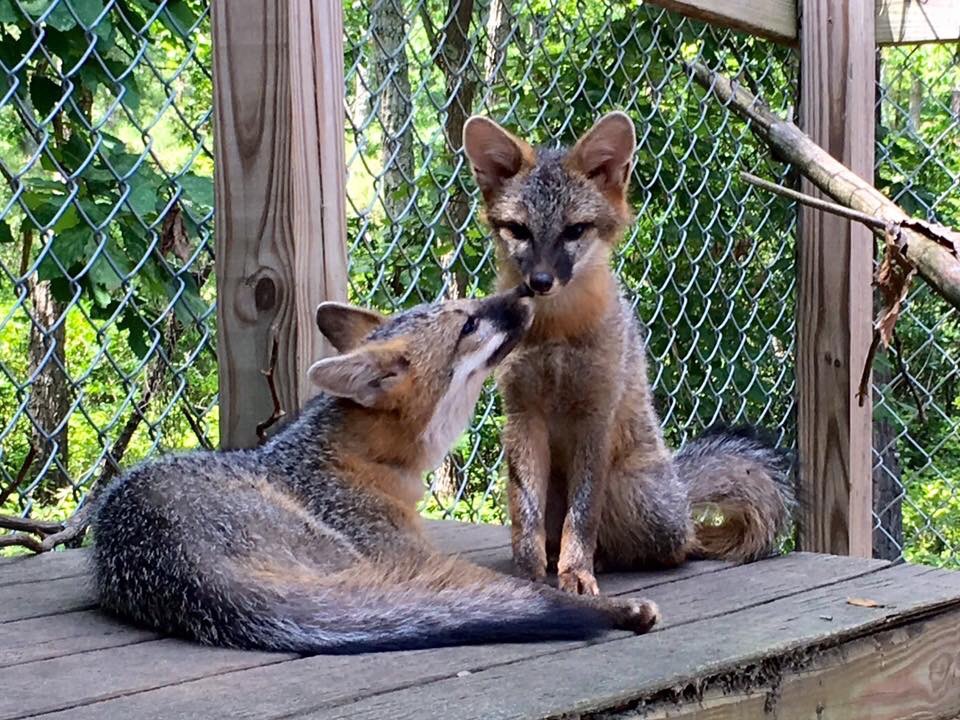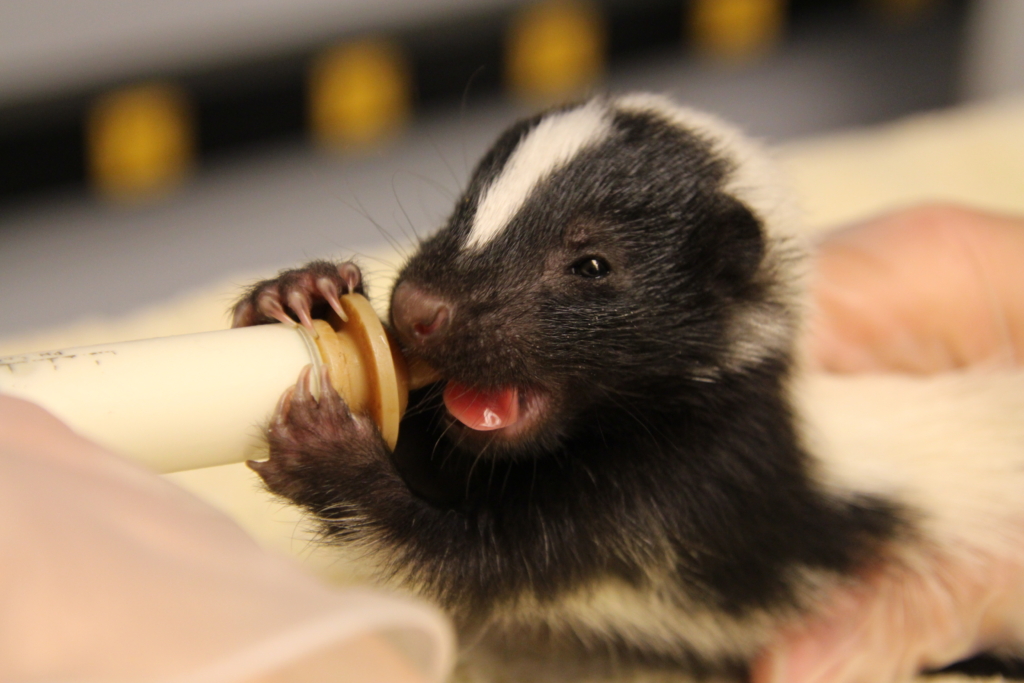
Cedar Run Wildlife Refuge in Medford treats and rehabilitates over 7,000 wild animals annually.
The Wildlife Rehabilitation Hospital at Woodford Cedar Run Wildlife Refuge in Medford has seen 5,027 animals as of last month. Last year the hospital saw a 26% increase – about 1,100 more animals than they’ve ever seen – hitting a record of 7,703 animals by the end of the year.
“We should start to see the animals start to decline after August (and) September, but then we’ll start to get in whatever is naturally injured,” said Lisa Franco, director of development for Cedar Run. “The issue with climate change is it’s becoming unexpected of what we will and won’t see, so that’s where we need to prepare and be sure that we’re ready to be able to care for that amount of animals.”

A baby skunk gets fed at the refuge.
Every year Cedar Run, according to its website, treats and rehabilitates over 7,000 wild animals annually, a number that continues to grow. The nonprofit provides year-round care for more than 50 wild animals who could not be released after rehabilitation. The rehabilitation of animals at Cedar Run started when a resident brought an injured Great Horned Owl to Betty Woodford (co-founder of Cedar Run) to see if she could help.
“The more that we can get more people to understand the mission that we’re doing and that we are not state or government funded and everything that we do really comes from the community, the better,” Franco said.
Lori Swanson, Cedar Run’s director of wildlife rehabilitation, is responsible for overseeing the care of non-releasable wildlife ambassadors and over 6,000 wildlife patients annually. She’s also responsible for diet plans and medical treatments and overseeing animal releases. Something special about Cedar Run to her is that the refuge has its permanent residents. Cedar Run’s Wildlife Housing Area has more than 50 native residents. Animals sometimes can’t be released because of a non-repairable injury. A permanent disability may prevent an animal from finding food or protecting itself.
“Not all centers are going to have the ability to keep permanent residents, and so Cedar Run allows us to have that and share that with the public,” she said. “They (the public) can come and see species that they have never seen before and hopefully build some sort of connection to those animals and leave wanting to help foster a healthy relationship with those animals in the wild and live more harmoniously with them.”
